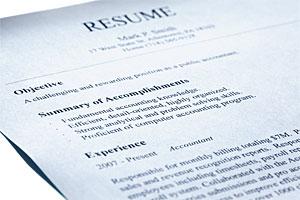Top 8 Considerations for Your Resume
 In addition to the normal questions I receive regarding resumes this time of year there has also been quite a bit of chatter about them in the TurfNet Forum, at GIS, and other industry channels. Last fall, I put together a very comprehensive article on resumes that covered many topics. It is quite lengthy, so I figured I would create a condensed Top 8 list for quick reference. Here is the original article if you want to get into the why on some of this stuff.
In addition to the normal questions I receive regarding resumes this time of year there has also been quite a bit of chatter about them in the TurfNet Forum, at GIS, and other industry channels. Last fall, I put together a very comprehensive article on resumes that covered many topics. It is quite lengthy, so I figured I would create a condensed Top 8 list for quick reference. Here is the original article if you want to get into the why on some of this stuff.
- A true resume is one page in length and is meant to summarize your career. Create a separate document that has all the extra bullet points, call this a portfolio, career anthology, etc. Create a large link icon or text link to the more lengthy document on the resume. Now you have both options for the hiring person available at the click of a button without having to send two files. Best solution available for the extra content.
- Never create a resume that is more than 2 pages in length, ever. If you are going to cross over into a 2-page resume, try to get all of your course experience on the first page, and then leave your education, associations, tournaments, etc. relegated to the second page. This may be impossible if you have worked at five or more courses but try your best to keep it short.
- Abandon all or most bullet points under each golf course. Simply list the course, your position, dates worked, and a brief description of the club and if it was renovated during your tenure.
- Remove the Objective statement. It is wasted space, the hiring person knows you are an industry professional looking to further your career at another club.
Remove the Objective statement. It is wasted space, the hiring person knows you are an industry professional looking to further your career at another club.
- Include a Qualifications or Highlights/Skills section at the beginning of the resume. Replacing the Objective with this will tell the reader that you are a good candidate because of these unique traits. This can be in bullet point or paragraph form, but you should try to keep it to a few sentences. They can be both specific to a certain club or general skills or experience.
- Design the layout to grab attention, not to include as much text as possible on the page. Again, the idea with the resume is to get the reader to understand the basics of your career, then deliver on the details with a separate piece. This can be accomplished via special fonts, colors, text callouts and more. However, be very careful here not to go over-the-top or DIY graphic designer, and you may want to consult a friend in the design business or contract it out if going down this route.
- Consider creating a personal website and really drive interest to it from the resume with a large, direct link. Nothing grabs a hiring person?s attention quite like a website. Why? Because all they have to do is click a URL link to view your career in a great sectioned format, not to mention pictures of the actual course, construction projects, and more. Re-read Tip #6 if you think this can be done with a free tool in your spare time though. Your career should be your top priority and it shouldn't be reflected by materials that are less than your professional quality on the course.
- Include a separate cover letter that is customized to that specific course, and why you are the best candidate for that club. Your cover letter should never be the same to every course you apply, it should vary greatly based on the application. By customizing it, you allow the hiring person to know you have already studied the club and immediately gain credibility as a sincere and thorough prospective hire.
The reason I recommend these 8 tips is because I have seen what works and doesn't in this industry. I have spoken directly with hiring personnel at clubs and with club members and officials at dozens of facilities through general work or search projects. The tips are not ideal for every single opportunity, but provide you a very good starting point to adjust as needed.


2 Comments
Recommended Comments